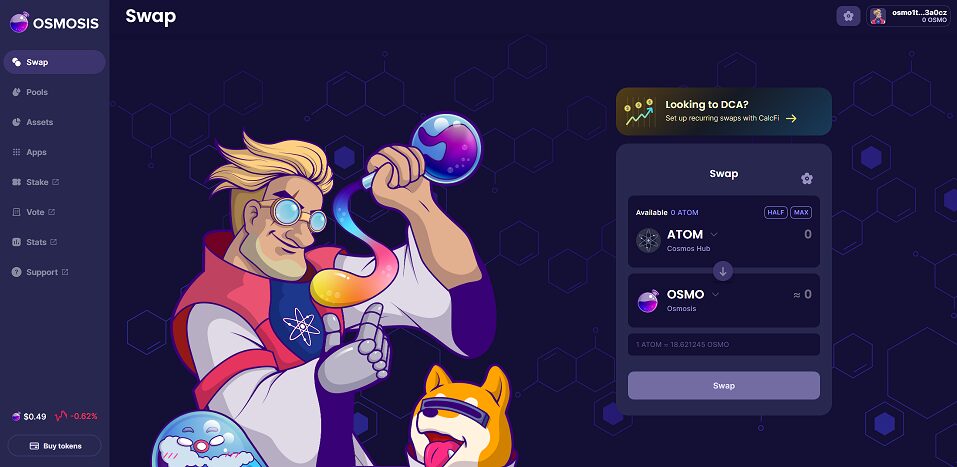The Cosmos-based decentralized exchange Osmosis (OSMO) has launched a new “concentrated liquidity” feature, according to a July 12 announcement from the app’s developer, Osmosis Labs. The new feature allows liquidity providers (LPs) to choose a minimum and maximum price to offer to buy or sell crypto.

The Cosmos ecosystem is a web of blockchain networks that use the Cosmos Software Development Kit (SDK) and are connected through the Inter-Blockchain Communication (IBC) protocol. Osmosis is one of the largest decentralized exchanges (DEXs) in the ecosystem, doing approximately $120 million of volume each day, according to data from DeFiLlama.
The new feature allows Osmosis LPs to provide liquidity at a minimum and maximum price. If the price falls below their minimum or above their maximum, they will no longer receive fees. On the other hand, they will receive higher fees when the price is within range than they would if they had chosen not to state a maximum or minimum.
According to the announcement, concentrated liquidity will provide a 100x to 300x increase in capital efficiency, meaning that a pool can have 100x to 300x less liquidity for the same amount of volume and yet still not cause slippage for traders.
The feature was first introduced to DEXs in Uniswap V3 and has become common throughout the Web3 world. However, the Osmosis team told Cointelegraph that it has been relatively rare in the Cosmos ecosystem before now.
Related: New Cosmos chain will use liquid staking tokens for security
In a conversation with Cointelegraph, Osmosis Labs protocol engineer Alpin Yukseloglu stated that the exchange’s new feature goes further than Uniswap’s original version. The original version of concentrated liquidity only allowed LPs to set minimums and maximums at particular price intervals, called “ticks.” This improved scalability but also created user experience issues when users couldn’t place price points exactly where they wanted them to be.
The version used by Osmosis adds more ticks within each price range, allowing for the setting of more finely-tuned minimums and maximums and potentially reducing user frustration, as Yukseloglu explained:
“We’re keeping that scaling, but we’re adding more ticks into each bucket to make it so that you can have those more granularly placed preferences.”
Yukseloglu said Osmosis plans to implement a full-fledged on-chain order book at some point in the future. The…
Click Here to Read the Full Original Article at Cointelegraph.com News…























